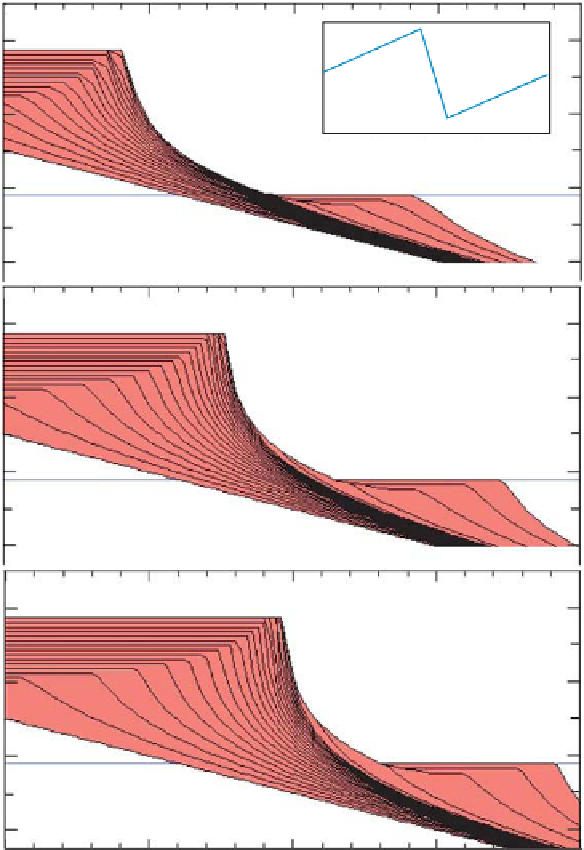Geology Reference
In-Depth Information
320
320
300
280
300
0
50
200
100
150
Time (kyr)
280
m yr
−
1
Production 1000
μ
260
320
300
280
m yr
−
1
Production 2000
μ
260
320
Fig. 7.
Carbonate production and FST
development. From top to bottom,
production increases from 1000 to
3000
300
m yr
1
, other parameters remain
unchanged (rate of fall 3000
280
m yr
1
,
erosion 275
m yr
1
). Top panel shows
STM, middle and bottom panel FST.
Note that appearance of FST goes hand
in hand with volume increase of all sys-
tems tracts. Time lines and numbering
on axes as in Fig. 3.
Production 3000
μ
m yr
−
1
260
0
100
200
Distance in modelling space (m)
part of the sediment cover of the Arabian craton.
It was deposited during the Aptian stage of
the Early Cretaceous in an epeiric sea that was
differentiated into carbonate platforms and
shallow basins with argillaceous sediments.
Sedimentological models of Shu'aiba anatomy
have evolved considerably during the past two
decades. Now there is broad agreement that the
main phase of platform building, the mid-Shu'aiba
of Boote & Mou (2003), was followed by a late phase
of basinward progradation and downstepping of
platform facies, the upper Shu'aiba (Figs 13 and
14). Most or all of the upper Shu'aiba can be inter-
preted as a falling-stage systems tract deposited
after the mid-Shu'aiba highstand tract. The C3D
modelling with these assumptions also produces
the best match with observation (Fig. 15).
Other case studies
The Early Cretaceous Habshan Formation of
Oman shows platform-basin transitions with
strongly prograding clinoforms, repeatedly includ-
ing FST geometries. Droste & Van Steenwinkel
(2004) and H. Droste (personal communication)
present a detailed description with suffi cient con-
straints on ages and range of fall to include the
example here.
In the Maldives, Belopolsky & Droxler (2004)
established a very detailed seismic stratigraphy
that is calibrated by core borings of the Ocean
Drilling Program (ODP) and exploration wells. In
the Miocene, several FSTs (called 'forced regres-
sive wedges' by the authors) were observed.
Ranges of sea-level fall were gleaned from seismic








